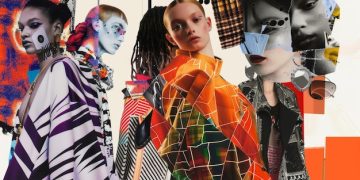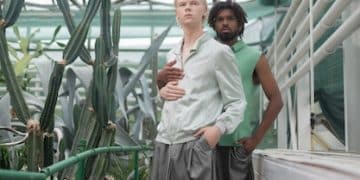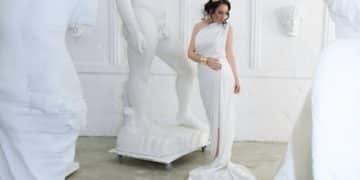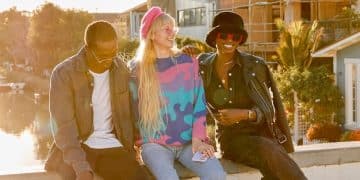Underground Fashion vs Fast Fashion: A Sustainable Alternative
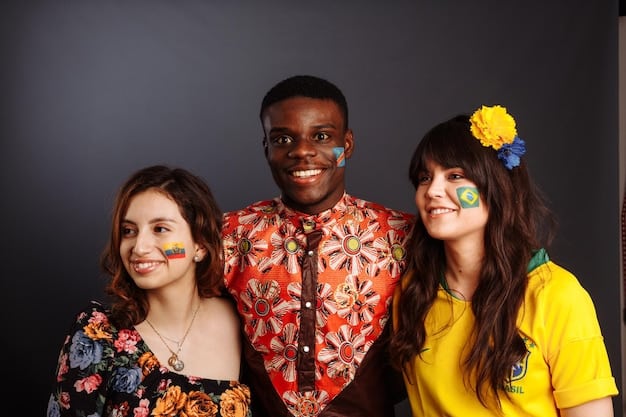
Underground fashion presents a compelling and sustainable alternative to fast fashion by emphasizing uniqueness, creativity, and ethical production, countering the homogenous and environmentally damaging practices of the mainstream industry.
The relentless churn of trends and the throwaway culture promoted by fast fashion have spurred a potent counter-movement: **underground fashion’s response to fast fashion: a sustainable alternative**. This burgeoning scene champions individuality, creativity, and ethical production methods, offering a refreshing contrast to the mass-produced garments dominating the mainstream.
Defining Underground Fashion
Underground fashion isn’t just about clothing; it’s a cultural statement, a rebellion against the norm, and a celebration of individuality. It encompasses a wide array of styles and subcultures, each with its unique aesthetic and ethos. Think of it as a breeding ground for future trends, where creativity knows no bounds.
The Core Principles
At its heart, underground fashion prioritizes self-expression and authenticity. It shuns the fleeting trends dictated by large corporations and instead encourages individuals to cultivate their personal style through unique pieces, often sourced from vintage stores, thrift shops, or independent designers.
Key Characteristics
Several characteristics define underground fashion, setting it apart from its mainstream counterpart. These include a focus on DIY aesthetics, upcycling and repurposing materials, and a strong emphasis on community and collaboration.
- DIY (Do It Yourself) Culture: A hands-on approach to fashion, where individuals create their own garments or customize existing ones.
- Upcycling and Repurposing: Transforming discarded materials into wearable art, reducing waste and promoting sustainability.
- Community and Collaboration: A network of designers, artists, and enthusiasts who support each other and share their creations.
Underground fashion challenges the status quo by rejecting the notion that style must be expensive or dictated by celebrity endorsements. It empowers individuals to take control of their appearance and express themselves authentically, regardless of societal pressures.
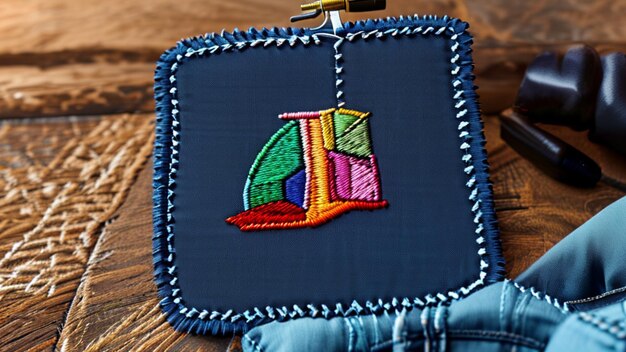
The Problems with Fast Fashion
Fast fashion’s allure lies in its accessibility and affordability, but beneath the surface lurks a dark reality of environmental degradation and social injustice. Understanding these problems is crucial to appreciating the importance of sustainable alternatives like underground fashion.
Environmental Impact
The fast fashion industry is a significant contributor to environmental pollution. From the intensive use of water and pesticides in cotton production to the release of toxic dyes and chemicals into waterways, its environmental footprint is staggering.
Ethical Concerns
Beyond its environmental impact, fast fashion also raises serious ethical concerns. Many garment workers in developing countries toil in unsafe conditions for meager wages, facing exploitation and abuse. The pursuit of cheap labor often comes at the expense of human dignity.
The consequences of fast fashion extend far beyond overflowing landfills and exploited workers. It perpetuates a cycle of consumerism that encourages wastefulness and devalues craftsmanship. By prioritizing quantity over quality, it undermines the principles of sustainability and ethical production.
- Water Pollution: Textile dyeing and finishing processes release harmful chemicals into rivers and streams.
- Waste Generation: Mountains of clothing end up in landfills each year, contributing to soil contamination and greenhouse gas emissions.
- Labor Exploitation: Garment workers, often women and children, endure long hours and hazardous conditions for minimal pay.
In response to these problems, a growing number of consumers are seeking alternatives to fast fashion. They are demanding greater transparency from brands and supporting businesses that prioritize sustainability and ethical practices.
Underground Fashion as a Sustainable Solution
Underground fashion offers a viable and attractive solution to the problems posed by fast fashion. By embracing creativity, resourcefulness, and community, it provides a more sustainable and ethical approach to clothing consumption.
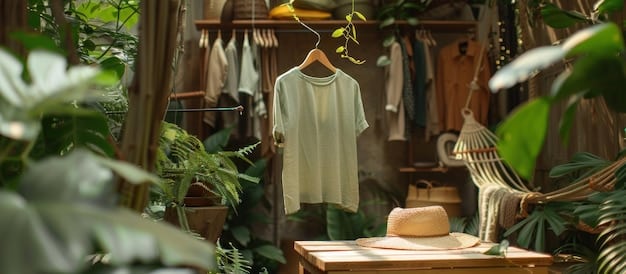
Upcycling and Recycling
One of the core tenets of underground fashion is the practice of upcycling and recycling. This involves transforming discarded materials into new and stylish garments, reducing waste and conserving resources.
Ethical Production
Underground fashion often prioritizes ethical production methods, supporting independent designers and small-scale businesses that treat their workers fairly and pay them living wages. This stands in stark contrast to the exploitative labor practices prevalent in the fast fashion industry.
The sustainability of underground fashion extends beyond its production methods. It also encourages a more mindful approach to consumption, promoting the idea of buying less but choosing better. By investing in quality pieces that are made to last, consumers can reduce their environmental impact and support ethical businesses.
Why It Works
- Reduced Waste: Upcycling and recycling divert textile waste from landfills.
- Fair Labor Practices: Supporting ethical businesses ensures that garment workers are treated with respect and dignity.
- Mindful Consumption: Buying less and choosing better promotes a more sustainable lifestyle.
Underground fashion empowers consumers to make informed choices and support businesses that align with their values. It offers a tangible way to create a more sustainable and ethical fashion industry.
The Role of Independent Designers
Independent designers are the driving force behind underground fashion. They are the innovators, the creators, and the champions of sustainability and ethical production.
Unique Designs
Independent designers bring a fresh perspective to the fashion world, offering unique and innovative designs that are not found in mainstream stores. They often draw inspiration from art, music, and subcultures, creating garments that reflect their personal vision.
Ethical Practices
Many independent designers are committed to ethical production practices, ensuring that their garments are made in fair and safe working conditions. They often work directly with artisans and craftspeople, supporting local communities and preserving traditional skills.
By supporting independent designers, consumers can invest in unique and ethically made garments that reflect their personal style and values. They can also contribute to a more diverse and sustainable fashion ecosystem.
- Supporting Innovation: Independent designers drive creativity and innovation in the fashion industry.
- Promoting Ethical Production: Many independent designers prioritize fair labor practices and sustainable materials.
- Fostering Community: Independent designers often collaborate with artists, musicians, and other creatives, building vibrant communities.
The rise of independent designers is a testament to the growing demand for sustainable and ethical alternatives to fast fashion. They are paving the way for a more responsible and creative fashion industry.
Community and Collaboration in Underground Fashion
Community and collaboration are essential elements of underground fashion. They foster creativity, support ethical practices, and empower individuals to express themselves authentically.
Shared Resources
Underground fashion communities often share resources, such as sewing machines, fabric scraps, and design ideas. This collaborative spirit fosters creativity and reduces waste.
Mutual Support
Designers, artists, and enthusiasts within underground fashion provide each other with mutual support and encouragement. This sense of community helps individuals overcome challenges and pursue their creative passions.
Collaboration within underground fashion extends beyond sharing resources and support. It also involves working together on projects, such as fashion shows, pop-up shops, and community events. These collaborations create opportunities for individuals to showcase their talent and connect with a wider audience.
- Creative Exchange: Collaboration fosters a dynamic exchange of ideas and inspiration.
- Resource Sharing: Community members often share resources, reducing waste and promoting sustainability.
- Empowerment: Mutual support and encouragement empower individuals to pursue their creative passions.
The strong sense of community within underground fashion is a vital ingredient in its success. It creates a supportive and inspiring environment where individuals can thrive and contribute to a more sustainable and ethical fashion culture.
How to Embrace Underground Fashion
Embracing underground fashion is a journey of self-discovery and conscious consumption. It involves exploring your personal style, supporting ethical businesses, and participating in a creative community.
Finding Your Style
Start by exploring different styles and subcultures to discover what resonates with you. Visit thrift shops, vintage stores, and independent boutiques to find unique pieces that reflect your personality.
Supporting Ethical Brands
Research brands and designers who prioritize sustainability and ethical production practices. Look for certifications such as Fair Trade and GOTS (Global Organic Textile Standard).
Participating in the underground fashion community can be a rewarding and enriching experience. Attend local fashion shows, workshops, and community events to connect with like-minded individuals and support local artists and designers.
- Explore Your Style: Experiment with different looks and aesthetics to discover what makes you feel confident and authentic.
- Support Ethical Businesses: Choose brands that prioritize sustainability and fair labor practices.
- Join the Community: Connect with other fashion enthusiasts and participate in local events.
By embracing underground fashion, you can make a positive impact on the environment, support ethical businesses, and express your individuality in a creative and meaningful way.
| Key Aspect | Brief Description |
|---|---|
| ♻️ Upcycling | Transforms waste into wearable garments. |
| 🤝 Ethical Production | Supports fair labor and safe conditions. |
| 🎨 Unique Designs | Promotes individual creativity and style. |
| 🌎 Sustainability | Reduces environmental impact of fashion. |
FAQ
▼
Underground fashion is a movement emphasizing uniqueness, sustainability, and ethical practices, countering fast fashion’s mass-produced trends with creativity and individuality.
▼
Fast fashion contributes massively to environmental issues through pollution and waste, and raises ethical concerns due to exploitative labor practices.
▼
Underground fashion prioritizes upcycling, recycling, and ethical production methods, significantly reducing waste and ensuring fair treatment of workers.
▼
Independent designers drive underground fashion by offering unique designs, championing ethical production, and fostering community support.
▼
Explore your style, support ethical brands, and engage with the community through events, workshops, and shared creative spaces to immerse yourself.
Conclusion
In conclusion, underground fashion represents a powerful and promising alternative to the destructive cycle of fast fashion. By embracing creativity, sustainability, and community, it offers a path toward a more ethical and environmentally responsible fashion future.

